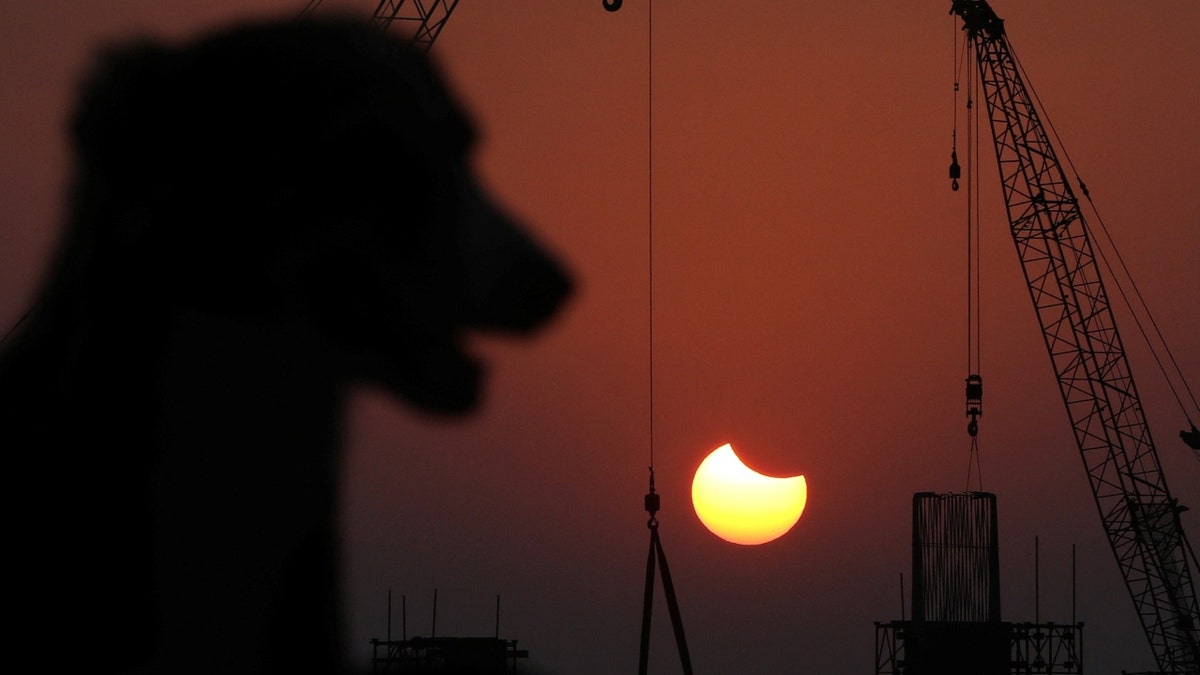October's partial solar eclipse seen over Germany
The partial solar eclipse over Hamburg, Germany
The last solar eclipse of the year was visible on Tuesday across Europe, Asia and Africa.
The partial solar eclipse started shortly before 5 a.m. EDT and ended a minute after 9 a.m.
At its maximum point, 82% of the sun was eclipsed by the moon.
During a partial solar eclipse, it looks as if a "bite" has been taken out of the sun.
NASA TEAM TO STUDY UFOS, RELEASE REPORT TO PUBLIC IN 2023
The final lunar eclipse of 2022 is set for Nov. 8, and the next total solar eclipse will be visible in Australia, Antarctica and Southeast Asia on April 20 of next year.
For North America, the next total solar eclipse is slated for April 8, 2024.

A view of a partial solar eclipse is seen in Cairo, Egypt Oct. 25, 2022. (Reuters/Mohamed Abd El Ghany)
The path of the eclipse enters the U.S. in Texas, traveling through Oklahoma, Arkansas, Missouri, Illinois, Kentucky, Indiana, Ohio, Pennsylvania, New York, Vermont, New Hampshire and Maine.
WEBB TELESCOPE CAPTURES STUNNING IMAGE OF PILLARS OF CREATION

A stray dog stands as partial solar eclipse is seen at a construction site in Mumbai, India, Oct. 25, 2022. (Reuters/Niharika Kulkarni)
It is never safe to look directly at the sun without a safe solar filter.
CLICK HERE TO GET THE FOX NEWS APP
When watching a partial solar eclipse, solar viewing or eclipse glasses are required.


